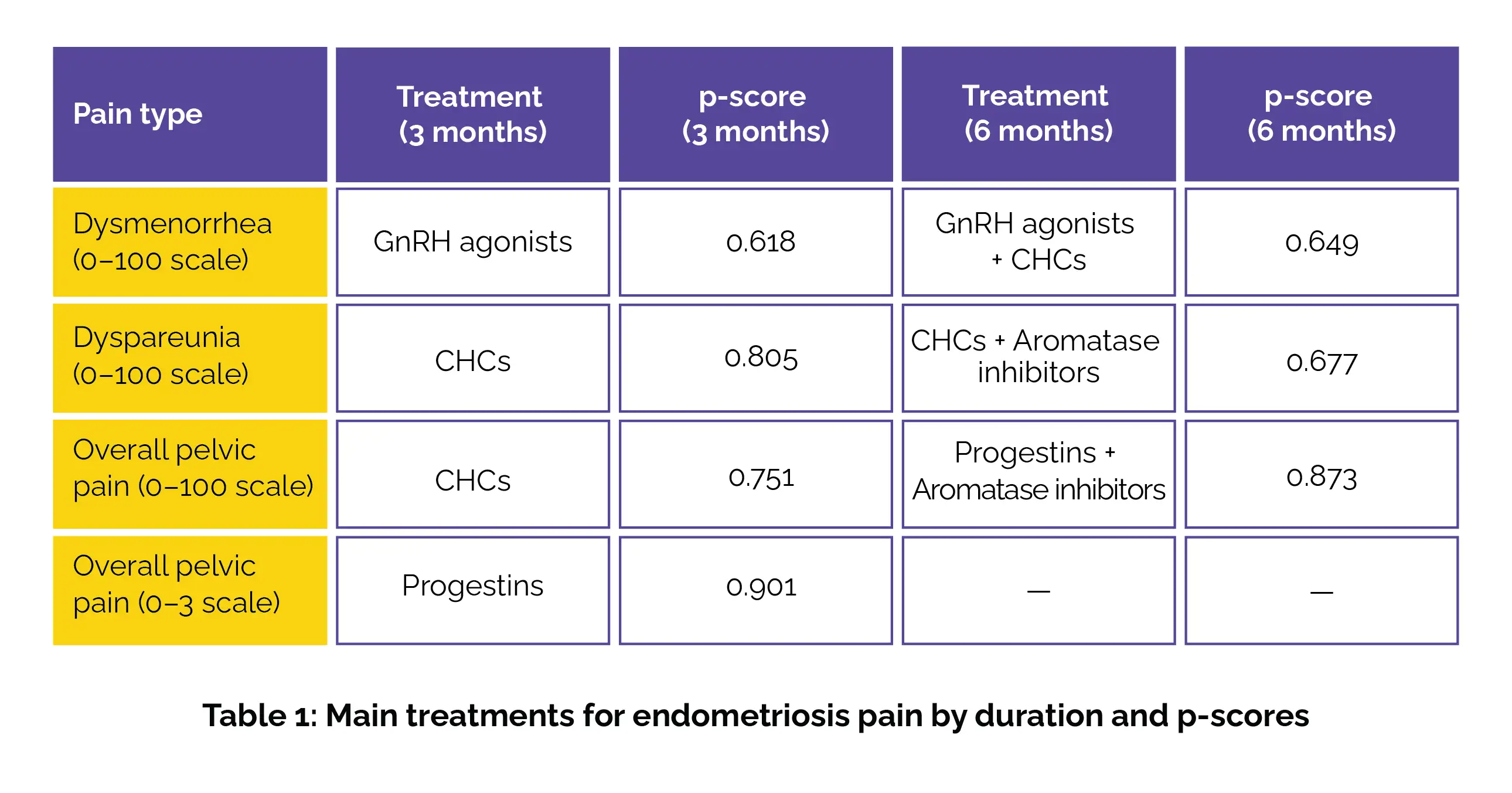Categories
Change Password!
Reset Password!


Endometriosis, affecting 6–10% of reproductive-aged women, is characterized by pain in the pelvic region, menstrual pain, and painful intercourse (dyspareunia).
Treatment effectiveness for endometriosis-related pain varies by symptom type—GnRH agonists with combined hormonal contraceptives work best for menstrual cramps, combined hormonal therapy alone eases pain during intercourse, and combining hormonal therapies with aromatase inhibitors provides optimal relief for widespread pelvic pain.
Endometriosis, affecting 6–10% of reproductive-aged women, is characterized by pain in the pelvic region, menstrual pain, and painful intercourse (dyspareunia). This study compared various therapeutic options for managing pain in women with endometriosis.
A systematic search across three medical databases identified randomized controlled trials evaluating various drug treatments for endometriosis-related pain using various pain scales. Findings were expressed using p-scores and, for placebo-controlled comparisons, as mean differences (MD) accompanied by 95% confidence intervals (CI). A network meta-analysis was conducted to contrast the effectiveness of available treatments.
The search identified 1,314 records, with 45 studies meeting the inclusion criteria. A network meta-analysis of 16 treatments across eight networks revealed that for dysmenorrhea (scale 0–100), gonadotropin-releasing hormone (GnRH) agonist provided the highest pain relief after 3 months, which further improved when used along with combined hormonal contraceptives (CHCs) over 6 months. For dyspareunia (painful intercourse), CHCs were most effective after 3 months, while CHCs combined with aromatase inhibitors showed the best results after 6 months. (Table 1)
In overall pelvic pain, CHCs yielded the highest p-score after 3 months, while progestins combined with aromatase inhibitors were most effective after 6 months. On a 0–3 pain scale, progestins alone provided the greatest relief for pelvic pain after 3 months. (Table 1)

Different hormonal therapies offer targeted pain relief for endometriosis, emphasizing the need for symptom-specific treatment strategies.
Journal of Clinical Medicine
Comparative Analysis of Medical Interventions to Alleviate Endometriosis-Related Pain: A Systematic Review and Network Meta-Analysis
Adam Csirzo et al.
Comments (0)